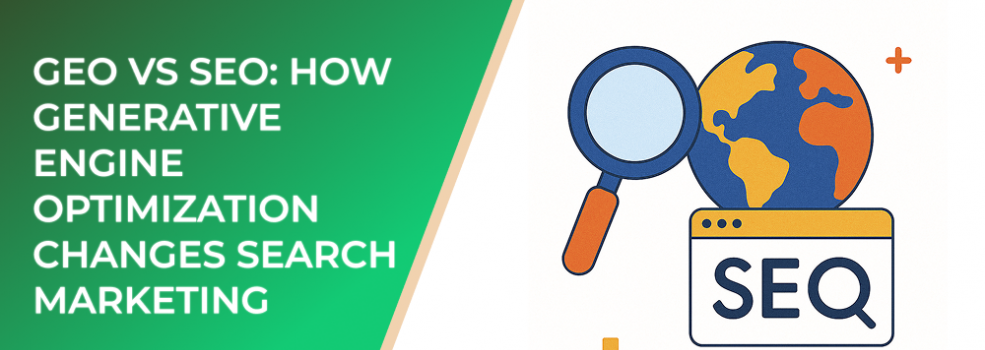For decades, Search Engine Optimization (SEO) has been about improving visibility on platforms like Google and Bing through keyword optimization, backlinks, and user experience. But as generative AI tools like ChatGPT, Google’s Gemini, and Perplexity AI enter the mainstream, users are increasingly getting answers directly from AI rather than browsing search results.
This shift introduces Generative Engine Optimization (GEO) — the process of optimizing content to be discovered, interpreted, and cited by AI-driven search systems.
According to Gartner, by 2026 more than 25% of search queries will be handled by generative AI systems rather than traditional engines. That means visibility will depend not only on how well your site ranks in Google but also on how AI models perceive and use your content.
What Is Generative Engine Optimization (GEO)?
GEO focuses on how AI models access, summarize, and recommend online information. Instead of optimizing for search crawlers, GEO optimizes for AI comprehension and contextual relevance.
Here’s how GEO differs from traditional SEO:
| Element | Traditional SEO | Generative Engine Optimization |
|---|---|---|
| Primary Focus | Search engine crawlers | AI models and language systems |
| Goal | Rank on results pages (SERPs) | Be cited or summarized in AI-generated answers |
| Keyword Role | Keyword targeting | Semantic context and topic authority |
| Measurement | Rankings, clicks | Mentions, citations, visibility in AI responses |
| Content Type | Web pages, blogs | Structured, factually rich, context-driven data |
Essentially, GEO is about making your content AI-friendly—clear, verifiable, and authoritative enough for generative engines to rely on.
Why GEO Matters for Marketers
Generative engines synthesize information from multiple sources rather than just displaying links. If your content isn’t structured to be understood by these systems, it risks being ignored entirely.
A study by BrightEdge in 2024 found that 68% of marketers expect GEO to be as important as SEO within three years, and early adopters are already reporting increased visibility in AI-based search results.
For brands, this means:
-
Content credibility becomes vital. AI models prioritize sources that are clear, accurate, and trusted.
-
Structured data (like schema markup) will play a larger role.
-
Brand mentions across different authoritative websites will become the new backlinks.
How to Implement GEO in Your Marketing Strategy
To adapt, marketers need to combine SEO fundamentals with AI-focused practices:
1. Write for both humans and machines.
Focus on clarity, structured data, and contextual richness. Avoid ambiguous phrasing and ensure facts are easy for AI to verify.
2. Use consistent brand signals.
Generative engines rely on brand consistency across platforms. Align tone, data, and identity across your site and social media.
3. Optimize for topical authority.
Instead of chasing single keywords, build content clusters around core themes. This strengthens contextual relevance for AI systems.
4. Include citations and structured evidence.
GEO favors verifiable sources. Include internal and external citations, tables, and clear statistics that AIs can interpret easily.
5. Track AI visibility metrics.
While GEO analytics are still emerging, monitor how often your brand or content appears in AI-generated responses or summaries.
The Future of Search Marketing
The rise of GEO doesn’t eliminate SEO — it evolves it. Traditional ranking will continue to matter, but the next generation of visibility depends on how effectively your content interfaces with AI systems.
Brands that understand this early will gain a significant competitive edge. Optimizing for generative search means future-proofing your visibility across platforms that rely on AI for content delivery.
Final Thoughts
GEO is redefining how brands approach digital visibility. It’s not about manipulating algorithms—it’s about making content more understandable, transparent, and reliable for both people and AI. As generative engines take over a growing share of search traffic, the brands that embrace GEO now will dominate tomorrow’s search landscape.

